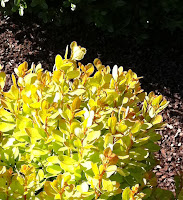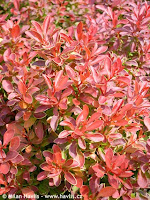SCIENCE
June 21 is a significant day for Planet Earth and its relationship with the sun. The Earth spins on its axis, an imaginary line going through the globe between the north and south poles, with each complete revolution taking 24 hours. However, the Earth’s axis is tilted 23.5 degrees off the plane of its revolution around the sun, and so for several months of the year, one half of the earth receives more direct rays of the sun than the other half. The four seasons are a result of this tilt.
The Summer Solstice is the date when the rays of the sun directly strike one of the two tropical latitude lines. Astronomers in the northern hemisphere calculate that the summer solstice occurs when the sun reaches the Tropic of Cancer thus causing the northern hemisphere to experience the longest day and the shortest night of the year, June 21, 2011 at 1:16 p.m. EDT (17:16 UTC). Similarly, astrologers know this as the date on which the sun enters the sign of Cancer in the starry heavens. Simultaneously it heralds the longest night of winter in the southern hemisphere. And far north of the Equator in the Artic Circle, there are 24 hours of daylight on June 21.
PLANT PHOTOPERIODISM
Plants respond to day length in direct ways. Photoperiodism is the term used to discuss plant responses to day length or more accurately, night length. “Long day plants” (like clover, foxgloves and garden pinks) bloom as the days get longer and when the nights are short.
After Midsummer, these plants stop blooming and other plants (like goldenrod and chrysanthemum) begin to bloom. These are called “short day plants” because they are triggered to flower as the days grow shorter (after the Summer Solstice) during late summer and fall. Well-known as a Christmas flower, the poinsettia develops its showy bracts as the year approaches the Winter Solstice, while the day length is decreasing and there are a long, unbroken periods of darkness each night.
Still other plants are “day neutral plants” because they are less responsive to the length of the dark period. Spring and Fall Equinoxes are the midway point of the solar year. (See also http://plantpreview.blogspot.com/2010/12/winter-solstice-full-moon-lunar-eclipse.html )
HISTORY & LORE
Awed by the power of the sun, for centuries civilizations have celebrated the Summer Solstice, also known as Midsummer, St. John’s feast day, or Litha. Although modern usage suggests that ‘summer begins’ at the summer solstice, the old folk calendar placed the beginning of summer on May Day (May 1) and the end of summer on Lammas (August 1). This more reasonably placed the summer solstice midway between the two, marking midsummer as the peak of old sun god’s strength.
The traditional Celtic Midsummer was celebrated on the fixed date of June 24, which coincides with the Christian feast of John the Baptist and his flower, St. John’s wort. Faery lore held that Midsummer night was a time of magic, when pixies and evil spirits went abroad. To thwart them, people wore protective garlands of herbs and flowers. One of the most powerful of them was a plant called 'chase-devil', also known as St. John’s Wort, and is still used by modern herbalists as a mood stabilizer.
Other flower-based customs included decking the house (especially over the front door) with birch, fennel, St. John’s wort, orpin, and white lilies. Five plants were thought to have special magical properties on this night: rue, roses, St. John’s wort, vervain, and trefoil. St. John’s wort was picked by young maidens in the hopes of finding her true love.
St. John’s connection to the wilderness (from whence “the voice cried out”) was often emphasized by the rustic nature of his shrines, and by his alternate name, “the Oak King”. Perhaps the archetypal ‘Green Man’, or ‘wild man of the wood’, whose face appears through the leafy masks that adorn early Church architecture, was based on St. John.
Celts and Slavs celebrated the eve of the first day of summer with dancing and bonfires representing the sun's energy (Shakespeare’s Midsummer Night’s Dream, June 23), staying up all night to welcome the dawn.
Couples would leap through the flames, believing their crops would grow as high as they were able to jump. Chinese marked the day by honoring Li, the Chinese Goddess of Light, in Spain it’s called the “Night of the Verbena (Vervain)”, while the Druids celebrated the day as the "wedding of Heaven and Earth", resulting in the present day belief of lucky June weddings. The Midsummer full moon was known as the "Honey Moon" for the mead made from fermented honey that was part of wedding ceremonies performed at the Summer Solstice.














